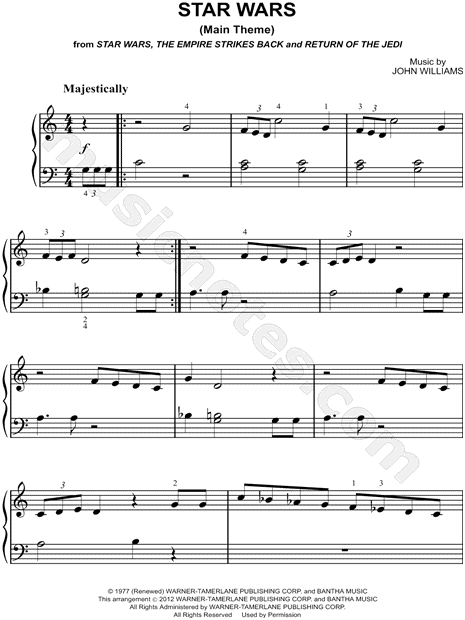

It quickly became one of the most recognizable theatrical motifs in the history of film. The film scripts refer to this opening theme as "war drums." It was composed by John Williams and performed by the London Symphony Orchestra.
#Star wars intro theme tv#
The " Star Wars Main Title" is the theme played at the beginning of every theatrically released Star Wars film so far and almost every other piece of Star Wars media (video games, TV series, etc.). So, while the music may seem unfamiliar and out of place to Star Wars fans at first, we should applaud Göransson and Jon Favreau for their ability to take something so beloved and intertwined into pop culture like Star Wars and transform it into another genre without ruining the end product." When I thought of a theme for Luke and his adventures, I composed a melody that reflected the brassy, bold, masculine, and noble qualities I saw in the character" ―John Williams on writing the "Main Title" The Mandalorian follows through with Western clichés, and Göransson embraces the stereotypical music of a Western with his composition, giving it enough quirkiness to have elements of Star Wars without straying too far from the genre. The Mandalorian is, at its core, a Western and, at least so far, does a fantastic job of remaining true to its roots. However, this is exactly what we cannot do with new Star Wars content. And if you discount the shift in genre, then you might have some issue with the way in which The Mandalorian uses music. We see this time and time again throughout The Mandalorian as any fight is met with triumphant tones that could nearly risk drowning the moment, and any time without action might cause you to miss the music at all if you are not looking for it.įor some, the difference between the two styles could be startling. Göransson takes the lead from this genre with powerful music to convey a specific emotion at a specific instance: loud, exciting music for triumph, muted sounds for sneaking and warm tones for peace. The Mandalorian, on the other hand, is a space Western and remains true to many Western tropes, including the music. This is a product of the genre as music is a tool that enhances each scene, encouraging the audience to feel a specific emotion – or at least attach one to the moment. “Anakin’s Betrayal” does not steal the spotlight from the character’s fall to the Dark Side, but it adds an underlying sadness to the scene that might not be present otherwise. “Duel of the Fates” does not overwhelm the audience, but adds a sense of awe and importance to an exciting moment. Star Wars takes the strings, the slow builds and, at times, the vocals that represent traditional classical and sometimes operatic music and then melds them with the scene. The Mandalorian defines itself as a space Western, and here lies the true difference and the shift in musical style.

Star Wars is unashamedly a space opera, and the music represents that. However, this is a lazy take, and it makes more sense to look at the genre of both Star Wars as we know it and The Mandalorian separately. After all, Star Wars is defined by the music of Williams and, while ultra-talented, Göransson has his own unique style of composing. We could simply chalk this up to composer Ludwig Göransson not being John Williams.


So why does the music in The Mandalorian come off as so unfamiliarly overwhelming at times? Sure, everyone knows and loves “The Imperial March” and “Duel of the Fates,” but what about theme-driven tracks like “Princess Leia’s Theme” and emotionally-moving songs like “ Anakin’s Betrayal”?Įvery song in Star Wars up to this point has served a purpose, whether to set up a scene or provoke an emotion, and it does a phenomenal job of that. One of the often-overlooked aspects that makes Star Wars, well, Star Wars, is the music.
#Star wars intro theme series#
How has the transition from John Williams to Ludwig Göransson impacted the series so far? The Mandalorian has been a massive hit on Disney+, but the music is certainly a departure from Star Wars’ traditional score.


 0 kommentar(er)
0 kommentar(er)
